Whenever you hear about Bitcoin, cryptocurrency or any other virtual money-related terms, you are likely to hear the word ‘blockchain’ as well.
It’s one of those buzzwords that has come up a lot over the last few years and is often misunderstood or used interchangeably with Bitcoin.
Don’t worry, I did that mistake myself before I got my head around cryptocurrency world.
So the time has come to explain what is a blockchain technology and answer the everlasting question: Which one was first – Bitcoin or Blockchain Technology?
I can promise, I will make it as simple as possible. And trust me, it’s way more fascinating than you think.
Blockchain Technology Definition
One of the easiest ways to gain a first understanding of blockchain technology is to think about Google Docs or Sheets documents.
Do you still remember days of using Word documents and sending it back and forth via email for rounds of edits or to implement changes? Or forgetting to put it on your pen drive and feeling sorry for yourself about missing a presentation?
Well… These times are long gone after introducing Google Drive which allows you to store all your documents in a cloud, enables multiple people to edit documents at the same time and updates itself without hitting the ‘Save’ button.
Pretty simple, right?
That’s in a nutshell how blockchain technology works.
Picture a spreadsheet that is duplicated thousands of times across a network of computers. Then imagine this network is designed to regularly update this spreadsheet. And you have a basic understanding of blockchain.
The blockchain is a growing database with millions of records, otherwise known as blocks.
With a blockchain, many people can enter information into records, and a community of users how the record is amended and updated.
The blockchain database, just like Google Docs, isn’t stored in one location. Rather, it functions more like a cloud, which anyone can access and verify it.
If you go back to the beginning of how cryptocurrency and blockchain were created, you will realise that the idea of decentralised, openly available, network originated there.
We will go more in depth to the creation of blockchain later on, but for now, just keep in mind that the data is accessible to anyone on the Internet and is hosted by millions of computers.
How Does Blockchain Work?
There are three principal technologies that create a blockchain technology:
- Private key cryptography
- Peer-to-peer network (P2P)
- Program – the blockchain protocol
Let’s break each one of them into steps and once you understand how each one of them works, you will have a very good perception of the whole blockchain fuss.
#1 Private Key Cryptography
The entire process starts with two people wanting to do a transaction or one person wanting to pay another entity.
To do that, they both need:
- Private secure key
- Public secure key
Both of these keys are required to complete a so-called digital signature. Bear in mind, it’s not a handwritten, personal, signature but a complex combination of numbers.
The signature will provide and ownership of the transaction and will work as a sort of stamp of the message. It also shows that the transaction comes from a legitimate source and will prevent an account holder from double spending.
The key combination only solves a problem of authentication, but it doesn’t provide a full security. It must be combined with the transaction approval and authorisation. To do that, we need a distributed network.
#2 Peer-to-Peer Network
If you remember the early days of Napster and illegal (ouch!) music downloads, then you also must be familiar with the P2P network.
It’s a designated network that allows two users to exchange goods (or files) without a third party interaction. And, as we already know, blockchain and cryptocurrency are all about avoid the middleman and its intrusion within the process.
When you look at blockchain, you can see a similar pattern. It’s a large network of members, whose main purpose is to validate the transactions and by that confirm they’ve all witnessed the same thing at the same time. And everyone has an access to it.
To secure the network they work on solving a complicated mathematical formula, and whoever solves it first, gets to verify the transaction and will be awarded particular cryptocurrency.
This step is also known as distributed network, purely because the entire network and its members are spread all over the word. Needless to say, the bigger the network, the more secure are the transactions.
Combining the security key with the verification from distributed network allows a secure and quick flow of transactions, that can be approved within minutes.
That’s not the end, the money hasn’t arrived at your bank account yet. In order to do that, the network has to establish a protocol.
#3 Program – The Blockchain Protocol
After all these steps we now have a block – a virtual element that consists of a digital signature, stamp and relevant information. The block is then spread to all the nodes within a network.
Apart from humans (yes, they’re geniuses but still humans), the blockchain network is built from nodes – a computer connected to the network.
Every node is built of a computer and a client that validates the transactions. Nodes work as ‘administrators’ of the blockchain technology and they join voluntarily. Each one of them can get an incentive at the end: an opportunity to win a Bitcoin or any other cryptocurrency. So one person’s interest helps to serve the public need.
With a bitcoin, the protocol’s goal is to eliminate the possibility of one coin being used twice in two different transactions. Nodes also create and maintain the history of transactions of each coin by solving proof-of-work mathematical formulas.
Once the transaction is ‘announced’ on the network, all nodes are working on the same formula, either accepting new blocks or rejecting the invalid ones. Once all nodes come to an agreement, they add a new block to the chain with a stamped time.
The process of verification of each block can be tailored for each blockchain. When you think about it, the type and amount of each block can be different, hence it’s a matter of blockchain protocol to establish whether it’s a valid transaction.
What Can a Blockchain Do?
Now that you know how blockchain works and you understand that’s used for cryptocurrency transactions’ process, you’re probably wondering if blockchain has any other purpose.
The answer is: YES.
What’s more – blockchain technology can also be used for so much more than just money and decentralising the entire banking system.
Once you think outside the cryptocurrency box, you will realise how much you can do with a blockchain technology.
It’s a huge topic for an another article, but just imagine you could use blockchain technology to pay for your parking tickets, voting or verifying your work history. Sounds good?
While there’s a number of studies trying to prove the usefulness of blockchains for more than just cryptocurrencies, below you can find the main principles of a blockchain technology.
Here’s what blockchain can do:
#1 Establish Digital Identity
Cryptography is an important force behind blockchain and it serves as a crucial factor in creating the digital secure key.
The use of cryptographic keys helps to create a digital presence and the two keys compliment each other in different ways. A public key shows how do you identify yourself in the network, while a private key expresses your consent to digital actions.
Thanks to that, blockchain can secure almost everything – votes, medical records, proof of intellectual property etc. Because of its structure, blockchain is far safer than standard cloud systems or old school paperwork.
#2 Eliminate The Middle Man
Because blockchain can validate the transactions and their value, it eliminates the intermediary.
With blockchain, anyone can go to their desired target straight away, without asking anyone for permission or approval.
Imagine artists or estate agents being able to go to straight to people – they no longer would have to use agents or agencies. It will not only save time but most importantly, the cost.
#3 Works as a Record, not Database
The biggest difference between a database and a record is that you cannot change the history of the latter.
One of the best features of blockchain technology is its history. Because it records all the entries and its details, it would be a huge effort to change anything that has already been input.
Changing one detail would result in having to alternate all the records on all nodes afterwards. And you can imagine, it wouldn’t be an easy job.
If you look at how a database works, it always belongs to an administrator who can enter new data and change a master copy. Only a certain authority has an access to a database.
In blockchain technology, on the other hand, everyone has an access to the same database. All members can maintain it, calculate it and update the new entries. This way all nodes work towards the same goal, ensuring they all come to the same conclusion and want to provide as much security to the network as possible.
In this way, blockchain technology works more as a system of records rather than a traditional database.
#4 Serves a System of Records
As mentioned above, blockchains are in their own way an innovation in data registration and distribution.
Blockchains have the ability to record both types of data: static (a registration form) and dynamic (a transaction).
Data can be stored on blockchains in three different ways or as an amalgamation of all of them:
- Unencrypted data – can be seen by anyone who participates in the blockchain and is transparent
- Encrypted data – can be read only by participants with a decryption key; it shows who added the data and when
- Hashed data – shows the data wasn’t tampered with and it’s usually combined with the original data, stored ‘off-chain’, e.g. digital fingerprints – they’re hashed into a blockchain but a physical body of information is stored offline
The way blockchain stores its data can revolutionise not only the money and financial system but it has also been used for storing medical records.
There is currently ongoing research that uses blockchain technology in storing medical records and could help future generations in analysing the family history or be easily accessible across the world, rather than just to stay at your local GP.
#5 Serves as a Platform
The first platform that used blockchains as a technology was cryptocurrencies, but that has changed ever since.
As the founder of Ethereum – Vitalik Buterin – proved, blockchains can be also used as a platform for smart contracts.
What are they?
Smart contracts can be divided into three categories:
- ‘Vending machine’ Smart Contacts – when a machine engages after receiving an external input or sends a signal that triggers a blockchain activity
- Smart Legal Contracts – a contract can be a mix of a verbal agreement, a written agreement, and now also some of the useful aspects of blockchains like timestamps, tokens, auditing, document coordination or business logic
- Ethereum Smart Contracts – Ethereum is a platform for smart contract code and it controls blockchain assets.
Blockchain vs Bitcoin – What’s The Connection?
Blockchain technology is often wrongly associated with just Bitcoin, forgetting that blockchain can be used for any of the 700+ cryptocurrencies. And as proved above, for much more than just money.
If you ever asked yourself which one was first – an egg or a chicken – then you can ask yourself the same question in relation to Bitcoin and blockchain technology.
So let’s go back to the beginning of cryptocurrency in 2008.
Bitcoin first appeared in a paper created by a person (or a group of people for all we know) under the pseudonym Satoshi Nakamoto. The paper detailed the innovative P2P payment system, that can be all set up digitally, happen online and without an intermediary.
Not long after that, it became evident that it’s not the currency – Bitcoin – that was so innovative but the technology behind it. Yes, the currency itself and the idea were fresh to the market, but it was the blockchain technology that allowed it to happen.
Although blockchain is commonly associated with Bitcoin, over time it found more applications. Bitcoin is merely just the first blockchain technology offspring, but it cannot replace it.
As Sally Davis from FT stated:
“Blockchain is to Bitcoin, what the internet is to email. A big electronic system, on top of which you can build applications. Currency is just one.”
I guess Nakamoto’s first idea was to create a virtual currency that could be decentralised and independent from any entity. Following from that, the blockchain technology was created.
Does this answer the question? To a certain extent, yes. But to be able to fully understand we would need to hear from Nakamoto personally, and that, as you know, is highly unlikely to happen.
The Future of Blockchain Technology
Unless you haven’t realised yet – blockchain technology is here to revolutionise not only the financial industry but also other areas of our lives.
Perhaps a better name would be ‘Blockchange’ – because of the promise it holds for transforming businesses around the world.
– Forbes
From storing medical records to solving legal disputes and paying for groceries. It’s no longer a thing from the future and invention for computer geeks.
Though it’s still early days in the development of Blockchain on the wider commercial market, the potential for incorporating the technology into almost every industry is endless.
But to fully understand what is blockchain technology we need more research and examples of how can we implement it to more aspects of our lives.
This will not only help with incorporating it to the businesses but it will also allow the public to relate to it on a more personal level. If we stop focusing on just the maths and dexterous technology behind blockchain, people will be able to understand the importance of it and that it’s inevitably the future of the world we live in.





